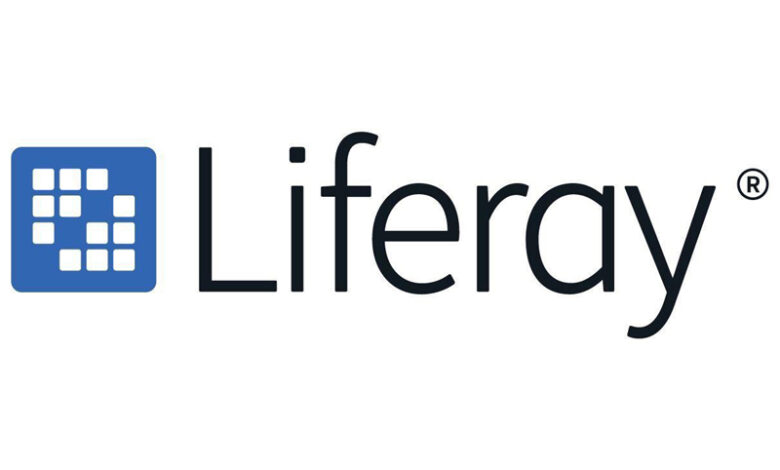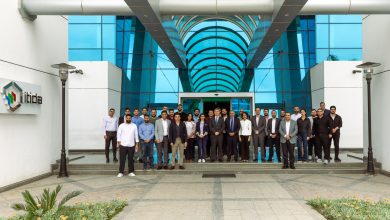
“World economies are experiencing moments of uncertainty as a possible recession starts to grow on the horizon, posing unpredictable challenges regarding public spending. Governments will face the challenge of adopting efficient technologies that allow them to innovate while keeping budgets under control,” said Jason Chang, Director of Industry Marketing at Liferay.
“After driving a great jump in digitalization in the past three years, IT leaders working in government will have to figure out how to maintain stable and sustained evolution from 2023 onward,” he added.
The report E-Government Survey 2022: The Future of Digital Government, from the United Nations, highlights that “Determining where to focus is essential for leaders with finite resources looking to truly move the needle on experience—and to promote critical outcomes linked to those efforts.”
Liferay develops a cloud-powered digital experience platform (DXP) used by government agencies worldwide to build portals, websites, and integration platforms.
With such uncertain times ahead, Liferay experts, who have been helping public sector entities on their path to digitalization for more than 15 years, identified the main challenges CIOs in government will face in 2023.
Liferay experts identified six major measures that the technology sectors must follow in order to face these challenges and help the government sector overcome the global recession:
Closing the Gap Between Customer Experience and Citizen Experience
Citizens are accustomed to great consumer experiences, and the success of public sector operations is increasingly linked to their ability to provide similar experiences. In fact, the user experience will be a critical KPI in 2023’s digital economy when it comes to providing new government service delivery models.
McKinsey & Co., in the article The Global Case for Customer Experience in Government, observes that, “By investing in customer experience programs, we’ve found that agencies can address the priorities that matter to every government leader.”
In this context, it is worth mentioning that the public sector still has to improve in terms of usability and web design. Often, government sites are not attractive and have a poor user experience. To improve on that, IT teams will have to invest in user-centered design and define consistent design systems that work across all channels.
Citizens also expect governments to offer authenticated, secure, and personalized experiences that allow them to accomplish tasks online instead of making a time-consuming face-to-face visit. This means providing one site, accessible from any device, to access multiple government services online and perform tasks such as paying a parking ticket, activating utilities, or requesting permits.
Turning Complex Legacy Ecosystems into Fully Integrated Environments
Given the broad range of services they must offer citizens, government CIOs often have to manage multiple systems that each have their own technology stack and database. Meanwhile, government employees must expend extra effort to navigate these siloed systems, which mirror the silos in government departments themselves.
As the systems age, maintenance costs increase. Although it would be nice to modernize everything in a legacy tech portfolio at once, most budgets will only support replacing one system at a time. Meanwhile, citizens will still expect a modern digital interface to these systems.
To bridge this gap between citizen expectations and budget limitations, public sector organizations are using technologies like digital experience platforms to quickly bring a usable, personalized face to their services, while tackling systems modernization over time. According to Gartner, 43% of Governments will invest in Integration Technologies/APIs in 2023. Integration is a smart way to deliver the high value of improved citizen experiences on top of legacy technology quickly and at a lower cost.
Driving Innovation with Reduced Budgets
Even though worldwide IT spending is expected to grow 5.1% in 2023, budgets in government will most likely get tighter due to the effects of the global recession expected this year. Doing more with less will be a strong motto for leaders in IT even as digital transformation initiatives for the public sector increase in importance.
To deal with budget constraints, government CIOs are looking for ways to leverage the systems and solutions they already have. As new technology acquisitions will be subject to budgetary approval, “this will motivate governments to invest in fixed TCO (Total Cost of Ownership) technology that will help them work with tight budgets,” highlighted Liferay experts.
Increasing Operational Efficiency: Public Employees as Allies in Digital Evolution
Another critical way to improve citizen experiences is to invest in the employee experience by providing public servants with tools to streamline the processes that directly impact their service to citizens. If public employees continue working with manual, intricate processes, investments in citizen experience may not pay off.
According to Liferay experts, Public sector organizations can help their employees better serve citizens in two ways:
Digitizing and automating key processes. Online forms for citizen requests only go so far if they simply funnel into a paper-based process in the back office. Digital process transformation will route requests to the right department or worker, automatically verify entitlements, and keep track of workload and service levels.
Providing unified access to disparate systems and data. Enabling government employees to easily find citizen information in a single place will mean more time freed up to respond successfully to citizen requests.
Simplifying Infrastructure
Building public infrastructure that allows better access to digital solutions will continue to be a challenge this year, and cloud is turning into one of the most powerful tools to do so, as, according to Gartner, 62% of Governments will invest in Cloud Platforms in 2023. Gartner also predicts that “migrating services to the cloud is among [the] primary innovation priorities that governments are focused on.”
Organizations have been using cloud platforms to simplify infrastructure, reducing the need for maintaining and managing their own infrastructure. As an example of this impact, a January 2021 survey showed that 70% of state and local government executives highlighted that cloud is their preferred environment for hosting citizen and mission data.
Security by Design
According to Gartner, addressing security risks is a top priority for federal and local government CIOs in 2023. Cybersecurity threats continue to grow, so a software that was secure yesterday may no longer be secure today. It is imperative that public sector entities stop looking at software security as building a fortified wall. Instead, they should view software security as creating an active immune system that is able to constantly address new threats.
Public organizations that excel in dealing with security risks are using enterprise-grade technologies built with a “secure by design” mentality that are compliant with market-wide best practices and equipped with tools to quickly find and mitigate vulnerabilities in code. This is especially critical for governments, as they need technologies that guarantee a high level of support in the event of an unforeseen cyber event or internal compliance difficulty.
Sustained Digital Evolution for the Public Sector
As Chang noted, “After analyzing the journey our government customers worldwide have been through, we recognize their effort to stay aligned with citizens’ expectations. Now, flexible, scalable, and secure technologies represent their best shot at maintaining a realistic sustained pace of digital evolution.”







